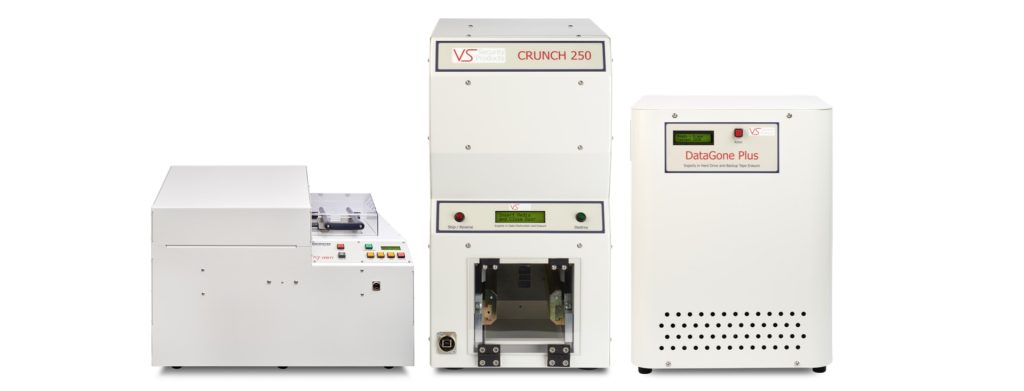Shredding SSDs: The Future of Data Destruction for Businesses

As businesses increasingly adopt solid-state drives (SSDs) for data storage, secure destruction of these devices has become crucial. Unlike traditional hard drives, SSDs cannot be degaussed, necessitating physical destruction methods such as shredding or crushing. With the rise in SSD usage, effective data destruction is paramount to prevent unauthorized access to sensitive information.
The global market for SSDs is booming, driven by their superior speed and reliability compared to traditional hard drives. According to a 2023 report by Statista, SSD shipments are expected to reach 290 million units by 2025, up from 140 million in 2019. This growth underscores the need for robust data destruction practices to manage the increasing volume of obsolete drives.
The Imperative of SSD Destruction
SSDs store data using NAND flash memory, which retains data even when powered off, unlike traditional hard disk drives (HDDs) that use magnetic storage. This makes data retrieval from SSDs more challenging once they are no longer in use. The process of degaussing, effective for HDDs, is ineffective for SSDs due to the absence of magnetic storage components. Consequently, businesses turn to shredding and crushing as reliable methods for rendering data irretrievable.
SSDs come in various types, including SATA, NVMe, and M.2, each differing in form factor and interface but fundamentally relying on flash memory for data storage. The architecture of these drives, designed for speed and efficiency, also complicates data destruction. Even advanced data wiping techniques may leave residual data, highlighting the necessity of physical destruction.
Methods of SSD Destruction
Physical destruction methods such as shredding and crushing ensure that data stored on SSDs is permanently inaccessible. Shredding involves cutting the drives into small pieces, while crushing applies force to deform the drives, destroying the memory chips within. These methods are preferred for their effectiveness in eliminating any possibility of data recovery.
Verity Systems’ MediaGone 500 is one such tool gaining traction in the industry for its efficiency in shredding SSDs and other flash media. This device can shred SSDs into tiny particles, ensuring that data cannot be reconstructed or accessed.
Broader Implications for Data Security
The importance of secure data destruction extends beyond SSDs to mobile phones, which also use flash memory. As mobile devices become integral to business operations, the secure disposal of outdated or damaged phones is vital to protect sensitive information. Shredding ensures that data stored on these devices is unrecoverable, safeguarding business and personal information from potential breaches.
In conclusion, as the adoption of SSDs continues to grow, the need for effective data destruction methods becomes increasingly critical. Physical destruction through shredding or crushing remains the most reliable way to ensure data security. Tools like the MediaGone 500 are becoming industry standards, providing businesses with the necessary means to protect their data. As businesses manage their data lifecycle, the secure destruction of SSDs and mobile devices will be a fundamental aspect of their data security protocols.
If you are considering SSD shredding for your business, contact us today to learn more about suitable data destruction tools that you can operate in an office environment: [email protected]
Photo credit: Iconica Media

